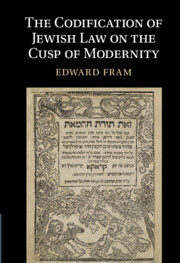Book contents
- The Codification of Jewish Law on the Cusp of Modernity
- The Codification of Jewish Law on the Cusp of Modernity
- Copyright page
- Dedication
- Contents
- Acknowledgments
- Abbreviations and Rules of Style
- Maps
- Introduction
- 1 Joseph Caro and His Codification of Jewish Law
- 2 A Difficult Beginning
- 3 Rabbi Solomon Luria’s Legal Methodology
- 4 Rabbi Moses Isserles’s Responses
- 5 Codification and Legal Creativity
- Conclusions
- Bibliography
- Index
- References
Bibliography
Published online by Cambridge University Press: 21 April 2022
- The Codification of Jewish Law on the Cusp of Modernity
- The Codification of Jewish Law on the Cusp of Modernity
- Copyright page
- Dedication
- Contents
- Acknowledgments
- Abbreviations and Rules of Style
- Maps
- Introduction
- 1 Joseph Caro and His Codification of Jewish Law
- 2 A Difficult Beginning
- 3 Rabbi Solomon Luria’s Legal Methodology
- 4 Rabbi Moses Isserles’s Responses
- 5 Codification and Legal Creativity
- Conclusions
- Bibliography
- Index
- References
- Type
- Chapter
- Information
- The Codification of Jewish Law on the Cusp of Modernity , pp. 288 - 319Publisher: Cambridge University PressPrint publication year: 2022



